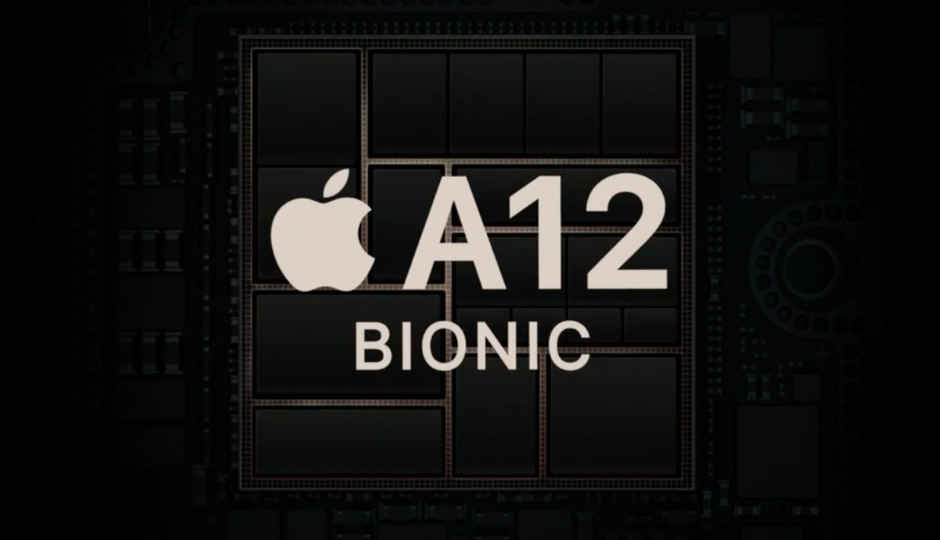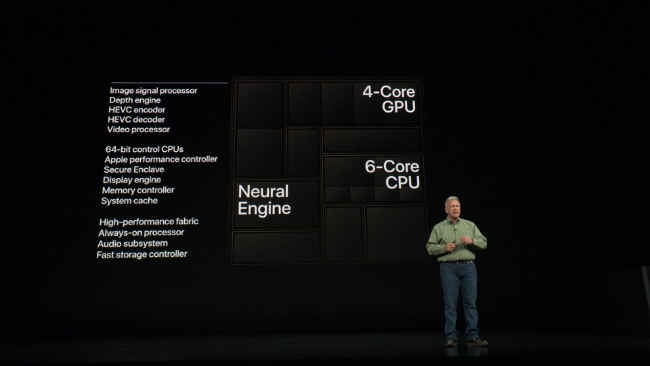Apple A12 Bionic is the brain behind the new iPhones and it’s the first commercially available 7nm chipset
The Apple A12 Bionic is based on a 7nm manufacturing process and touts a six-core CPU, four-core GPU and a dedicated eight-core Neural Engine to handle machine learning tasks.

The new iPhone Xs, iPhone Xs Max and the iPhone Xr has arrived and they look incredible. There’s a lot of things improved in the new iPhones, and most of them have been taken forward from the iPhone X. They aren’t necessarily new, only they work better, based on what we saw unravel in the Steve Jobs Theater at Apple Park. Powering the experience of the new iPhones is the new Apple A12 Bionic chipset. It’s the industry’s first 7nm chipset manufactured with a six-core CPU, four-core GPU and an upgraded eight-core Neural Engine. Apple’s Senior Vice President of Marketing, Phil Schiller seems to be right when he claimed the A12 Bionic chipset is “the smartest, most powerful chip ever in a smartphone.”
 Survey
SurveyA six-core CPU, four-core GPU and eight-core Neural Engine
The Apple A12 Bionic stands out for being the industry’s first 7nm chipset. It’s at the bleeding edge of chipset technology. Although Huawei did spoil the party by announcing the 7nm-based HiSilicon Kirin 980 for the Huawei Mate 20 at IFA this year, Apple’s chip will be the first to come to the market. There are a total of 6.9 billion transistors packed in the chip. The A12 Bionic relies on Apple’s own Fusion architecture. The six-core CPU has two performance cores which the Cupertino giant claims to be up to 15 percent faster and 40 percent more power efficient than the A11 Bionic that powered the iPhone X last year. Coupled with that are four efficiency cores that draw up to 50 percent lower power. This allows the iPhone Xs and the iPhone Xs Max to launch apps 30 percent faster than the older iPhone X, apart from making apps run smoother than ever before (you’ll likely feel no difference though).
The A12 Bionic also boasts of a four-core GPU that Apple claims can deliver 50 percent better graphics. It’s an Apple-designed GPU that can do tesselation and multi-layer rendering up to 50 percent faster and provide lossless memory compression. Apple called upon the stage the Chief Game Designer of Bethesda to show off the GPU’s capabilities in Elder Scrolls: Blade, a first-person shooter RPG game that’ll hit the App Stores later this year (pre-orders have already started). The game-play showed incredibly rich graphics, almost comparable to a high-end gaming console, with 40 percent faster post-processing and rendering. The additional GPU cores come into play to render more effects.
By shrinking the die size, Apple also had space for a dedicated eight-core Neural Engine to handle machine learning tasks. It’s an upgrade over the dual-core Neural Engine on the iPhone X. Naturally, it can do a whole lot more. The Neural Engine can now crunch Core ML 2 tasks nine times faster, and takes up only one-tenth of the power required in the previous Neural Engine. It can process 5 trillion operations per second, up from 600 billion on the A11 Bionic. While the number certainly sound over-the-top, it’s not clear what operations Apple is talking about here. Apart from making Core ML 2 apps run faster, the Neural Engine will also provide real-time machine learning to enable features like Siri Shortcuts where you can launch app shortcuts with customised Hey Siri commands. Memoji (Apple’s new take on Emojis) will now be overlayed on your face in real-time while on a FaceTime call while FaceID works faster on the new iPhones. The Neural Engine also lends a hand in Apple’s Augmented Reality apps.
The A12 Bionic chip also understands the kind of machine learning workload it’s working on and decides whether to run it on the CPU, GPU or the Neural Engine. It’s typical to what Qualcomm has done on its current flagship Snapdragon 845 chipset’s Neural Engine.
How is the A12 Bionic chip used in the new iPhones?
Based on the sheer numbers, it’s clear that Apple’s A12 Bionic is miles ahead of other smartphone chipsets. The benchmark numbers are yet to be made official, but I have sneaky feeling it is going to leave the other smartphone processors in the dust. Although, because the A11 Bionic was already more than capable of handling any and every kind of task with ease without ever showing signs of a slowdown, the A12 Bionic’s compute power may not be perceivable to a large extent. The newer features like Siri Shortcuts are certainly made possible because of the enhanced processing power and efficiency. In daily operations, however, it’s unlikely to show any visible difference. Of course, we’ll test out the new iPhones intensively once we get our hands on them, and this is just my prediction.
There should be a noticeable change in the battery life though. Both the new iPhone Xs and the iPhone Xs Max lasts longer than the iPhone X, according to Apple. The battery capacity of the two iPhones are unknown as of now, but the 7nm size of the chipset will improve power efficiency.
The new chipset will also power augmented reality apps. Apple showed off an AR-based basketball training app called HomeCourt that only uses the chipset (especially the neural engine and ARKit 2) to offer granular insights into one’s practice.
The A12 Bionic will also work its magic in the camera. The iPhone Xr, for one, which has a single lens camera at the back, will depend on the improved ISP on the A12 Bionic to deliver the same bokeh effects (including changing the aperture settings in post-production), portrait mode and portrait lighting. The CPU and the Neural Engine work together for better segmentation masks that make the portrait mode work even better. The camera also takes images in multiple exposures and uses the Neural Engine to analyse and match the best parts of the images to create, what we saw, stunning photos. You’ll theoretically get more dynamic range in photos than the iPhone X.
More information incoming..
More information about the A12 Bionic chipset will be out over the course of the next few days. We still don’t know the maximum frequencies the CPU and the GPU can achieve along with some more granular information. Apple doesn’t rely on these information explicitly to market its products, and they are usually discovered by journalists and analysts once the new iPhones land into our hands for reviews. But one thing is clear. The A12 Bionic is made specifically to power the new iPhones, and boy does it seem to do that well.
